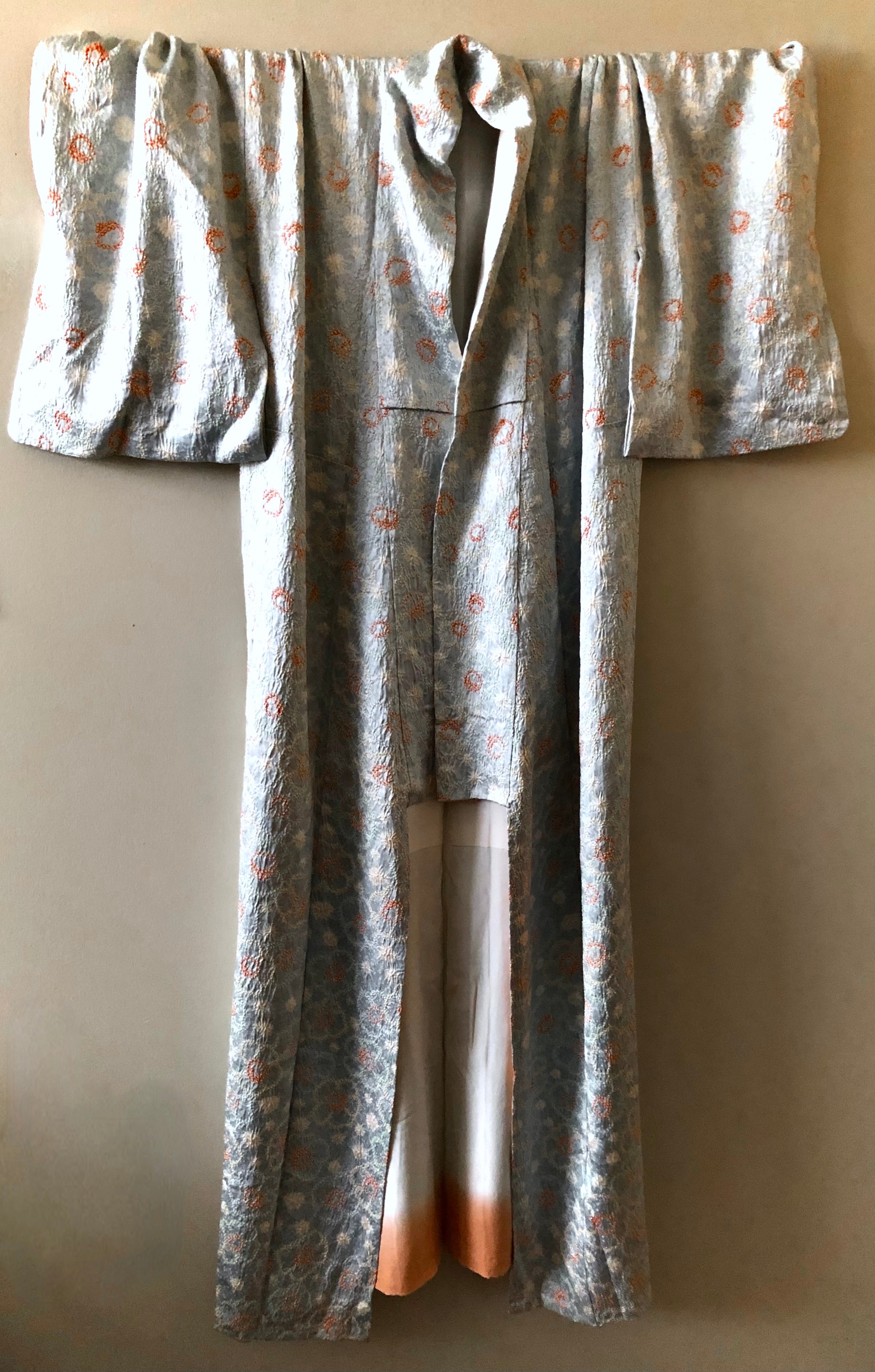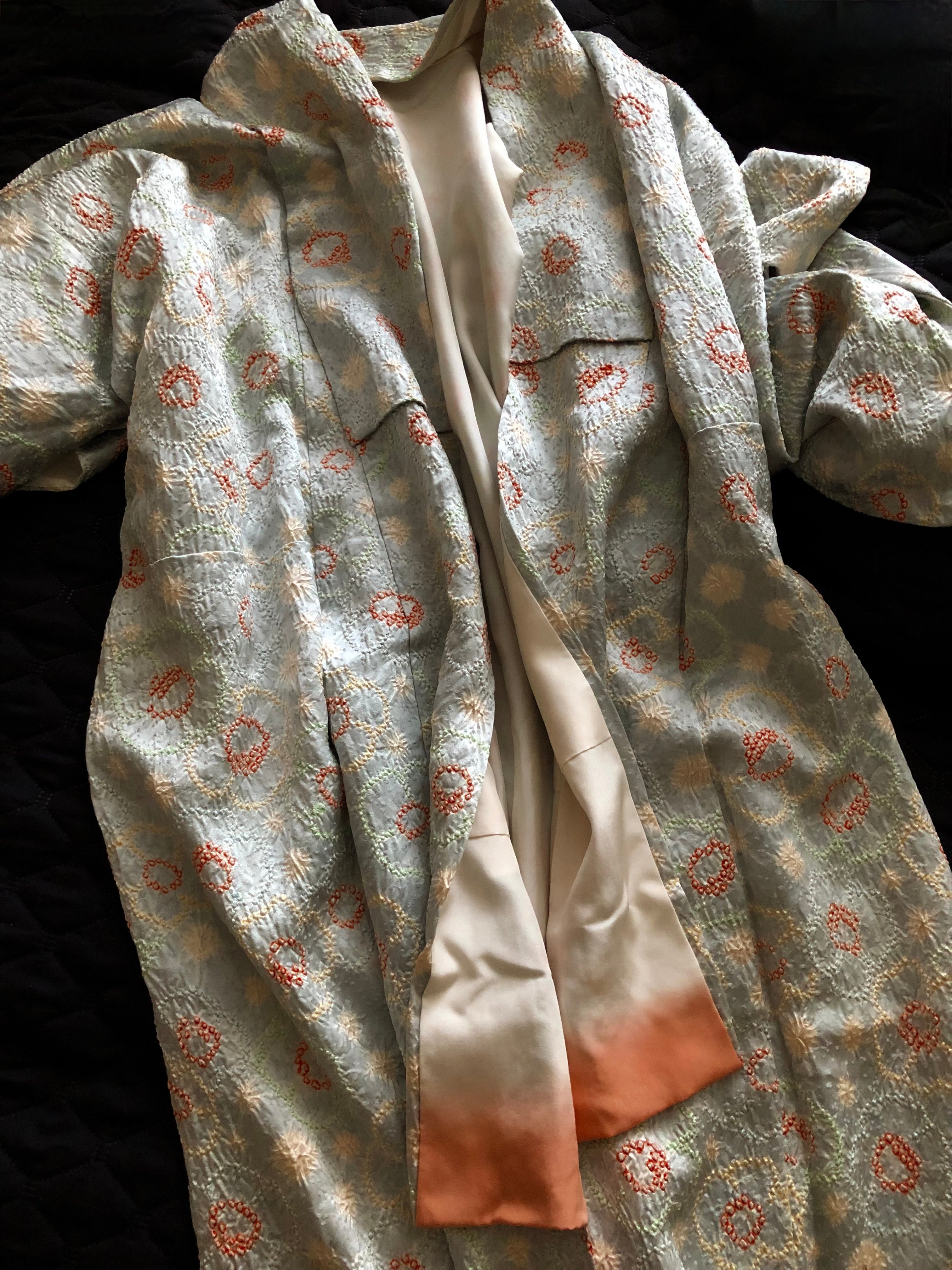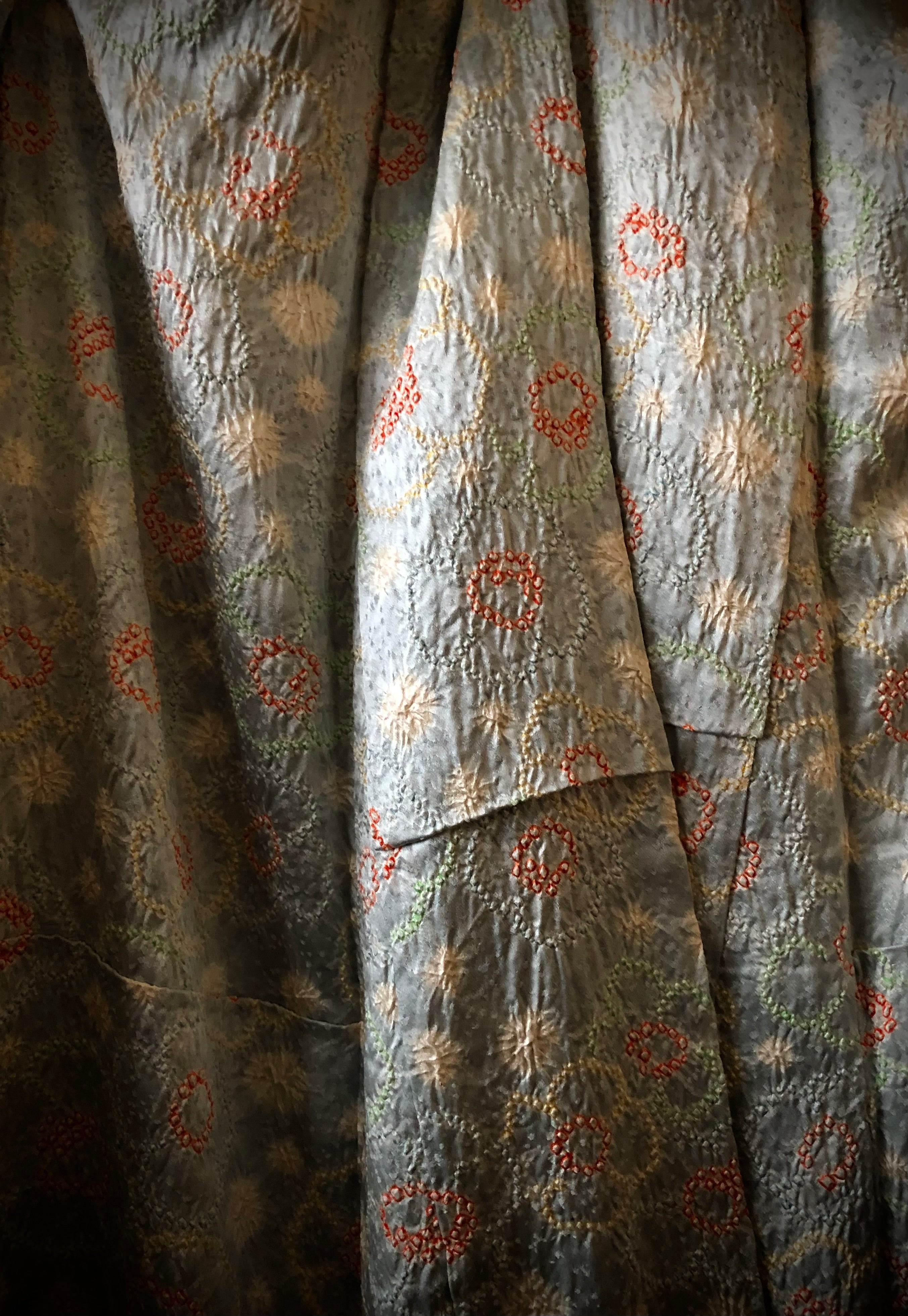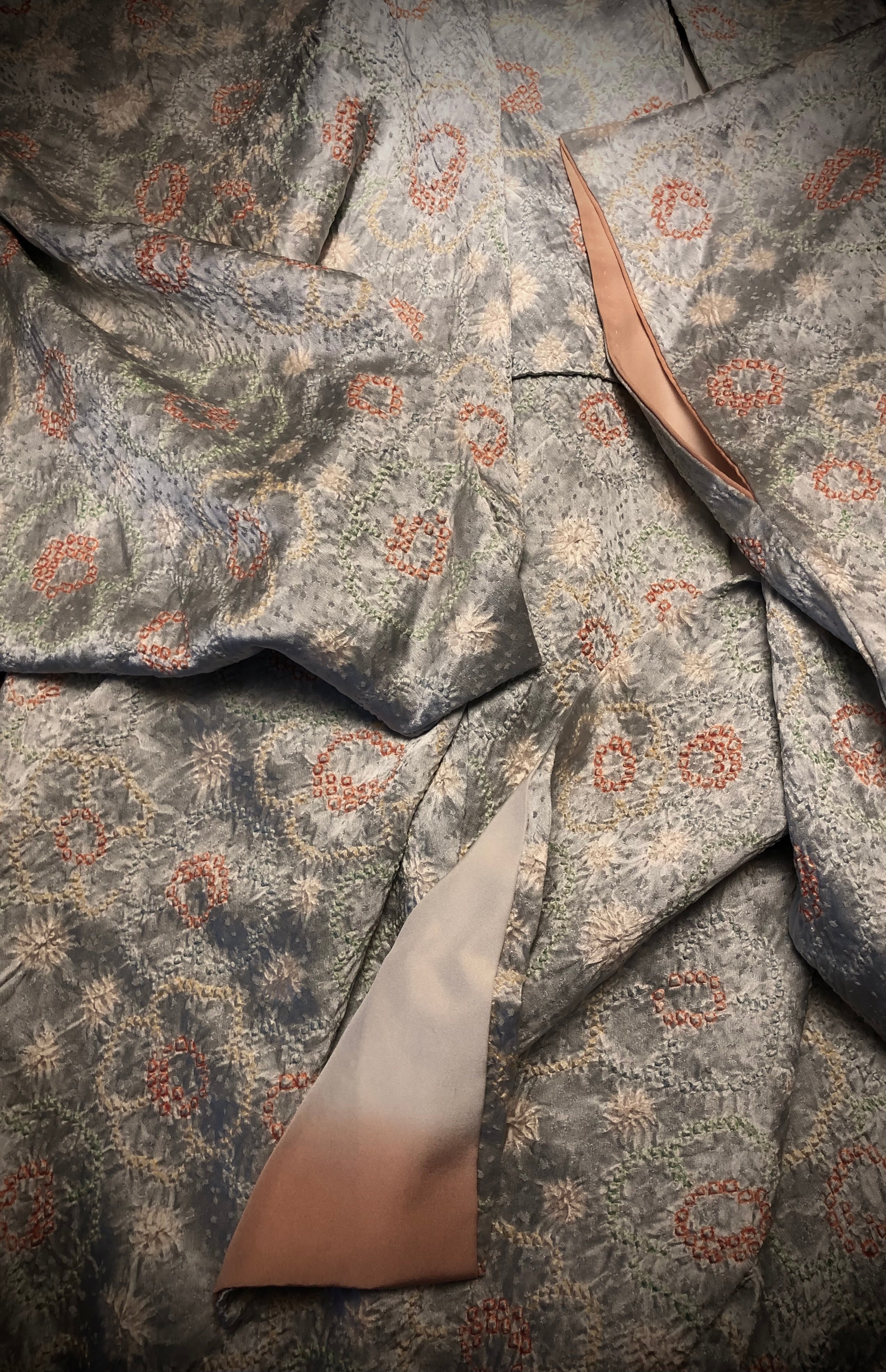



Japanese Vintage Silk and Shibori Kimono | Tie-Dyed Silk Kimono
Dimensions: 56-0”l x 49-0”w x 24-0” Shoulder to Shoulder (12-0” Sleeve Width x 18-1/2” Sleeve Length
Aside from this beautiful garment being unique and exceptionally unusual, it demonstrates a beautiful and sublime combination of motifs incorporating Shibori techniques. This is a concept derived from Buddhist teachings which directly relates to what is known as “Wabi-Sabi”, which is the Japanese worldview or aesthetic centered on the beauty that is “imperfect, impermanent, and incomplete”.
This use of Japanese Shibori (one of the oldest indigo dying techniques in Japan) is a masterpiece made of 100% silk which has short sleeves and is typically worn at “Chado” traditional Japanese tea ceremony. Aside from being in tune with the season this kimono has subtle variation in the dye which adds to the understated elegance in keeping with the solemn celebration of the tea ceremony itself. The most unusual and unique feature having a creamy texture with a soft, smooth drape. The garment has artistically abstract shapes on a ground of shiny ice-blue silk fabric with orange, yellow, and, green colorations. The kimono lining is cream-colored silk with accents of orange on the ends of the placket and hem.
The Shibori artists who created this magnificent textile used a technique called Nui Shibori which is the most detailed of all the Shibori techniques and is as much about stitching as it is about dying. By using hand stitching techniques and wooden dowels to create resists, the outcome of this process is carefully crafted and captivating designs with accurate patterns. Finally, tie-dye tends to draw from a focused color spectrum, and like the design shown in this garment employs a method to work in harmony with the type of dyed cloth achieving elaborate results.
Condition: Excellent with minimal wear with no noticeable blemishes or damage. It has retained its woven gold thread throughout the garment and creates an outcome that is as unique as the object itself.
Additional Information: In Japan, the earliest known example of cloth dyed with a Shibori technique dates from the 8th century; it is among the goods donated by Emperor Shōmu to the Tōdai-ji in Nara. Until the 20th century, not many fabrics and dyes were in widespread use in Japan.
